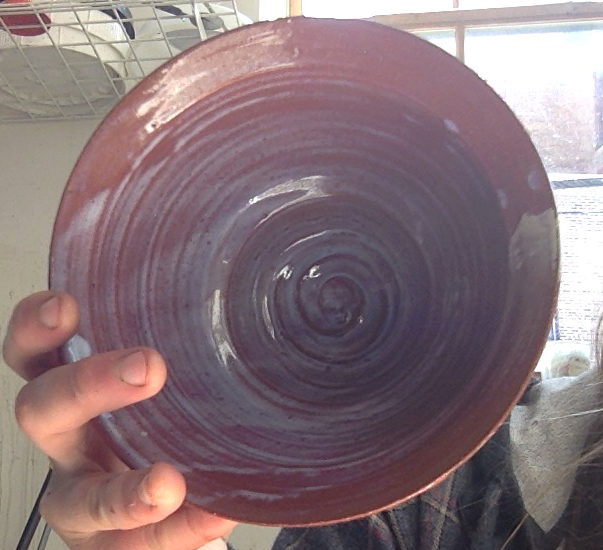| Monthly Tech-Tip | No tracking! No ads! | |
What happens when ceramic glazes lack Al2O3?
This happens. They are glossy, but lack thickness and body. They are also prone to boron blue clouding (micro crystallization that occurs because low alumina melts crystallize much more readily on cooling). Another problem is lack of resistance to wear and to leaching (sufficient Al2O3 in the chemistry is essential to producing a strong and durable glass). This is a good example of the need to see a glaze not just as a recipe but as a chemical formula of oxides. The latter view enables us to compare it with other common recipes and the very low Al2O3 is immediately evident. Another problem: Low clay content (this has only 7.5% kaolin) creates a slurry that is difficult to use and quickly settles hard in the bucket.
Videos
Links
| Glossary |
Boron Blue
Boron blue is a glaze fault involving the crystallization of calcium borate. It can be solved using glaze chemistry. |
| Glossary |
Leaching
Ceramic glazes can leach heavy metals into food and drink. This subject is not complex, there are many things anyone can do to deal with this issue |
| Glossary |
Glaze Chemistry
Glaze chemistry is the study of how the oxide chemistry of glazes relate to the way they fire. It accounts for color, surface, hardness, texture, melting temperature, thermal expansion, etc. |
| Oxides | Al2O3 - Aluminum Oxide, Alumina |
Got a Question?
Buy me a coffee and we can talk

https://digitalfire.com, All Rights Reserved
Privacy Policy

